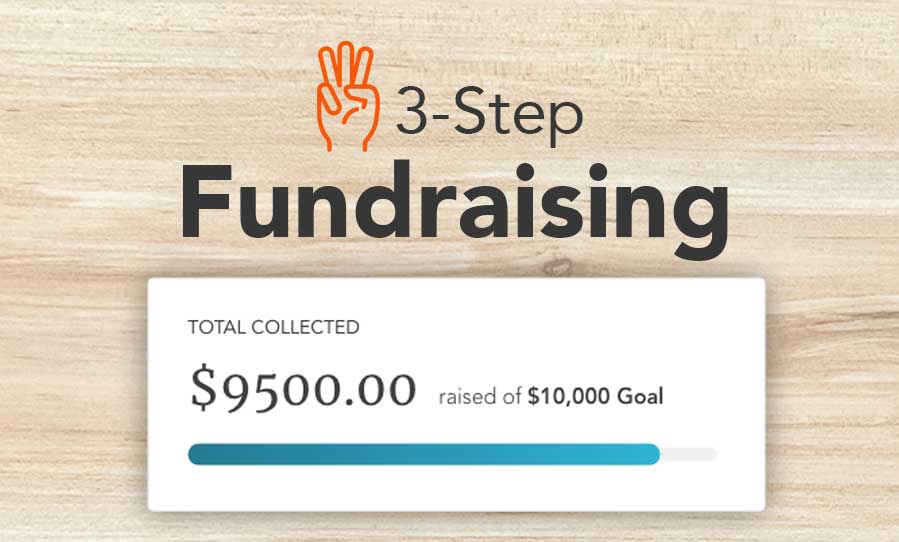Nonprofit Agency: Expert Services to Support Your Mission and Goals
Nonprofit Agency: Expert Services to Support Your Mission and Goals
Blog Article
The Function of Area Interaction in Nonprofit Fundraising: Structure Lasting Relationships for Lasting Assistance
Area engagement is significantly recognized as an important element of effective nonprofit fundraising. By fostering real relationships with local stakeholders, companies can cultivate count on and loyalty, which are important for sustainable assistance. However, the approaches and strategies used to involve areas vary widely, raising essential concerns concerning efficiency and impact. What are the very best practices for cultivating these important connections, and just how can nonprofits determine their success in this sector? Understanding these characteristics can significantly affect the future of fundraising efforts and the total objective of nonprofit organizations.
Comprehending Neighborhood Involvement
Community engagement is a vital element of effective nonprofit fundraising efforts. It describes the methods and activities that companies utilize to get in touch with their local areas, cultivating partnerships that are mutually beneficial. Comprehending community engagement entails acknowledging its multifaceted nature, that includes cooperation, outreach, and involvement. Nonprofits have to identify key stakeholders-- such as community participants, neighborhood services, and other companies-- to create effective involvement techniques.
Reliable neighborhood involvement is predicated on energetic listening and responsiveness to the needs and rate of interests of the neighborhood. This process includes soliciting comments, recognizing area dynamics, and making sure that the company's goal straightens with regional top priorities. Engaging the area can take different kinds, including public meetings, volunteer opportunities, and collaboration initiatives, each made to encourage involvement and financial investment in the company's goals.
Additionally, neighborhood involvement ought to be approached as a continuous dialogue instead of an one-time effort. By cultivating an inclusive atmosphere where community voices are heard and valued, nonprofits can construct a strong foundation for future fundraising endeavors. Inevitably, a deep understanding of neighborhood interaction empowers companies to develop authentic connections that improve their general performance and sustainability.
Advantages of Strong Relationships
Strong connections created via area engagement yield many advantages for nonprofit fundraising initiatives. Primarily, these connections foster depend on and credibility, essential components in motivating donors to contribute. When possible advocates see a not-for-profit actively associated with their community, they are most likely to believe in its mission and effect.

Additionally, these relationships help with effective communication. Nonprofits can take advantage of their connections to share tales of impact, updates, and needs, ensuring that supporters continue to be educated and engaged. This open line of interaction not just reinforces bonds yet also urges word-of-mouth promo, broadening the not-for-profit's reach.
Finally, strong neighborhood ties can draw in new companions and enrollers. People and services are more likely to straighten with organizations that show meaningful area involvement, offering extra resources and assistance that can considerably boost fundraising capacities. Hence, cultivating durable connections through community involvement is important to a not-for-profit's lasting fundraising success.
Methods for Efficient Involvement
How can nonprofits effectively engage their areas to enhance fundraising efforts? Creating targeted strategies is vital for cultivating purposeful links. First, leveraging social networks platforms enables organizations to share their mission dynamically and interactively, reaching a broader audience. Routine updates, engaging web content, and calls-to-action can galvanize neighborhood interest and engagement.
2nd, organizing neighborhood occasions, such as workshops, volunteer possibilities, or fundraising drives, helps with face-to-face communication, allowing nonprofits to showcase their impact and initiatives. These events not only increase funds but likewise grow connections and allow area members to engage straight with the cause.
Third, applying individualized communication techniques can boost involvement. Tailoring messages to certain contributor sections based on interests and previous contributions cultivates a feeling of belonging and investment in the company's goal.
Finally, developing partnerships with local services and area leaders can magnify outreach initiatives. Collective efforts can enhance presence and integrity, showing a collective dedication to the community's well-being. By integrating these strategies, nonprofits can construct lasting relationships that improve fundraising efforts and drive lasting assistance.
Measuring Involvement Success
While engaging the neighborhood is critical for successful nonprofit fundraising, determining the effectiveness of these interaction initiatives is equally vital. Developing clear metrics allows organizations to analyze how well they are linking with their audience and accomplishing their fundraising objectives. Trick performance signs (KPIs) such as benefactor retention prices, volunteer participation levels, and involvement on social media sites platforms offer concrete data for analysis.

Frequently analyzing these metrics allows companies to pivot their approaches when required, making certain that community involvement remains aligned with their overall objective. Furthermore, sharing these results with stakeholders fosters transparency and develops trust, encouraging additional area involvement. Ultimately, a robust dimension structure not just educates future fundraising initiatives but likewise enhances the relationship weblink between the not-for-profit and its supporters, laying the foundation for lasting success.
Study in Area Impact
Countless instance studies illustrate the profound effect that area engagement can carry nonprofit fundraising success. One remarkable example is the "Something to chew on" initiative, where a regional food bank partnered with schools and services to host area dinners. These events not only increased funds however also promoted a feeling of belonging amongst individuals, considerably increasing contributor retention rates.
An additional compelling situation is the "Environment-friendly Spaces Job," which entailed local homeowners in the revitalization of metropolitan parks. This campaign not only gathered financial backing from regional organizations however additionally cultivated a volunteer base that contributed to recurring maintenance and shows. The sense of ownership and pride among neighborhood members translated into continual contributions.
In the realm of arts, the "Art for All" project effectively involved local musicians and patrons to develop collaborative art installments, bring about increased presence and contributions for a Look At This regional arts not-for-profit.
These examples highlight that when nonprofits focus on neighborhood involvement, they can create long-term partnerships that improve fundraising initiatives, guaranteeing sustainable support and cultivating a dynamic neighborhood society. Such instances demonstrate that community engagement is not simply a strategy but a crucial column of not-for-profit success.
Final Thought
In verdict, community interaction is indispensable to the success of nonprofit fundraising efforts. Inevitably, a durable foundation of neighborhood assistance not just amplifies fundraising prospective yet additionally cultivates a society of cooperation, important for accomplishing lasting business goals and sustaining significant effect. fundraising consultant.
Nonprofits have to identify essential stakeholders-- such as neighborhood participants, neighborhood businesses, and other companies-- to develop effective interaction methods.

In final thought, community interaction is important to the success of nonprofit fundraising initiatives.
Report this page